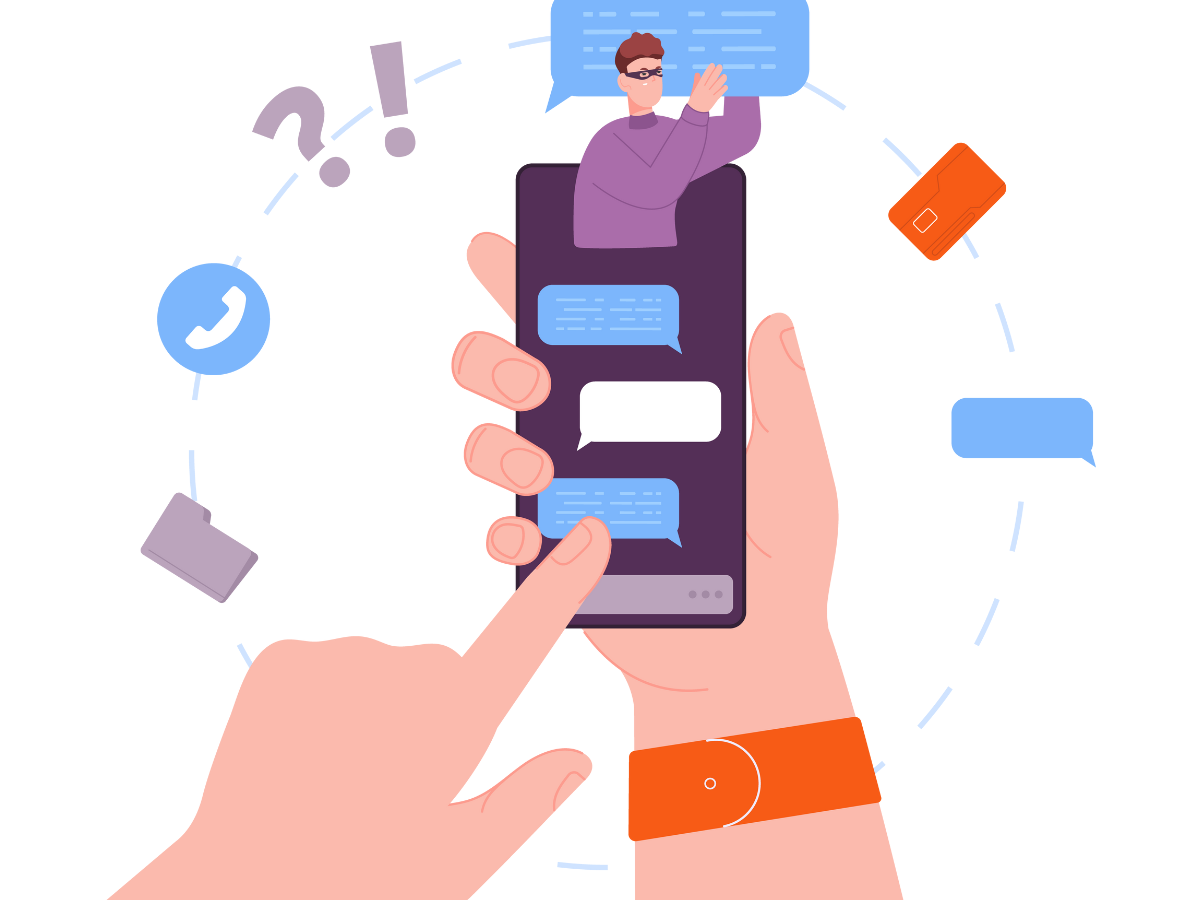The term “smishing” may sound somewhat amusing, but the reality is far from a laughing matter. Smishing is short for “SMS phishing,” and it’s a type of cyberattack that takes advantage of text messages to deceive and defraud individuals. In this article, we’ll delve into the world of smishing, exploring what it is, how it works, and most importantly, how you can protect yourself from falling victim to such scams.

What is Smishing?
At its core, smishing is a form of phishing attack that relies on text messages as a means of luring unsuspecting individuals into a trap. These deceptive messages can employ various tactics, including social engineering, malicious attachments, and fake websites, all designed to trick people into revealing sensitive information or infecting their smartphones with malware.
The danger lies in its ease of execution, difficulty to trace, and the potential harm it can cause. A successful smishing attack can compromise your data, including passwords, photos, and videos, and even serve as a gateway for malware to infiltrate your smartphone.
The Widespread Threat
It’s crucial to realize that virtually anyone with a smartphone is a potential target for smishing attacks. In the United States alone, the Federal Trade Commission reported nearly 400,000 fraud complaints related to unwanted texts and smishing attacks in 2021. This resulted in consumers losing over $80 million to scammers that same year.
Smishing Defined
To simplify, smishing can be defined as phishing through text messages. While it primarily occurs via native mobile text messaging systems like SMS, some experts extend the definition to include attacks on other text messaging platforms, such as social media messages.
How Smishing Works
Smishing attacks are successful because they mimic legitimate messages, making it challenging to discern the fake from the real. Here’s how they operate:
- Context: Smishing messages create a context that appears genuine. For instance, scammers may pose as your bank, a favorite retailer, or even a government agency. They use this context to gain your trust.
- Targeted Selection: Scammers often select their victims based on demographics or local affiliations. For instance, they might send fake texts from a bank popular in a specific area code or impersonate a university to students.
- Social Engineering: Smishing leverages emotional manipulation to cloud judgment. For example, a fraudulent message may claim to be from a loved one in need of urgent financial help.
- Malicious Attachments and Links: Smishing texts may contain harmful attachments or links leading to fraudulent websites or malware.
Smishing vs. Phishing
While smishing and phishing share similarities, they differ in their attack mediums. Smishing occurs through text messages (SMS), while phishing is a broader term encompassing deceptive emails, websites, text messages, and even voice messages. Both aim to gather personal information for fraudulent activities.
Protecting Yourself
Here are steps you can take to protect yourself from smishing attacks:
- Report the Attack: Notify the relevant authorities with as much detail as possible, including screenshots and message copies.
- Change Passwords: If you suspect a smishing attack, change all your passwords and use strong, unique ones.
- Freeze Your Cards: Temporarily freeze your debit or credit cards to prevent fraudulent use.
- Monitor for Suspicious Activity: Keep an eye on your accounts for unusual transactions or signs of compromise.
- Filter and Block: Use filters and blocking features on your smartphone to prevent smishing messages.
- Verify Sources: Confirm the authenticity of messages and never share sensitive information via text.
How to stop smishing texts
After determining that a text is fraudulent, you can block it on an iOS or Android phone. On an iPhone, go to the contact page and tap Block this Caller. On an Android phone, go to the contact page and tap Block contact.
Both operating systems also offer filters that can allow you to block spam and other unwanted texts.
How to filter texts on iPhone:
- Go to Settings.
- Tap Messages.
- Swipe the button next to Filter Unknown Senders.
How to filter texts on Android:
- Go to Messages.
- Tap the three dots to open Settings.
- Tap Block numbers and messages.
- Activate Caller ID and spam protection.
By staying vigilant and following these guidelines, you can reduce the risk of falling victim to smishing scams and protect your personal information. Stay safe in the digital age!

